Most lacemaking areas in Europe, apart from the English East midlands,
use/used unspangled bobbins; nearly always made of wood.
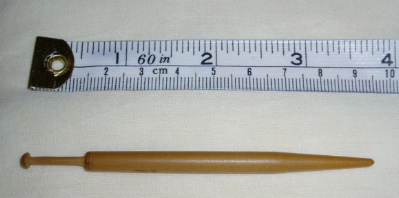
A Honiton bobbin as used in south Devonshire.
A little further west in Dorset and Wiltshire similar bobbins, but with slightly rounded ends were used.
Honiton are the smallest bobbins, being used with very fine threads.
The pointed end makes it easier to pass the bobbin through the loop of thread when making sewings.
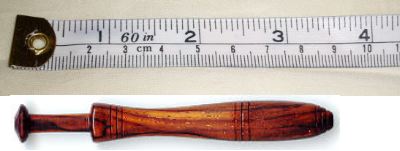
In the parts of Buckinghamshire the 'South Bucks Thumper' was used in preference to the commoner spangled Midlands bobbins.
This is a modern version with a slightly longer neck than was traditional.
Maker and owner Jim Stavast
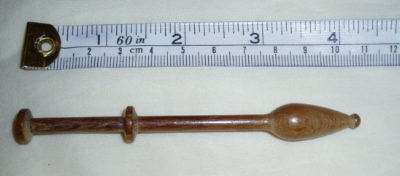
Small Flemish bobbin.
Used for Binche and other fine laces.
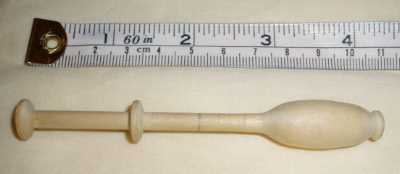
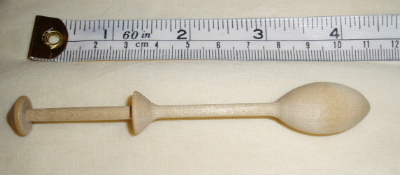
Regular 'continental' bobbins. These are both mass produced bobbins, and are unpolished

Another mass produced continental bobbin. Extra big to accommodate very thick threads
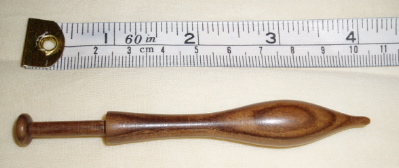

Two French style bobbins. The double head is used around the le Puy area.
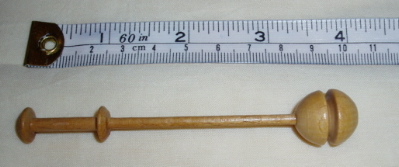
Danish bobbins have a circular end to the shank to add weight
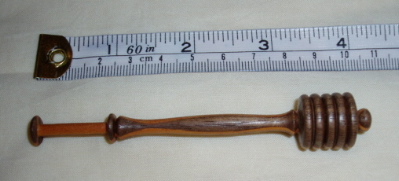
This 'Danish' bobbin is based on a honey stirrer.
maker Kenn Van-Deiren

Another style of Danish bobbin, similar to the French style
Owner Sonja Sillay

This is a Swedish bobbin.
Owner Sonja Sillay
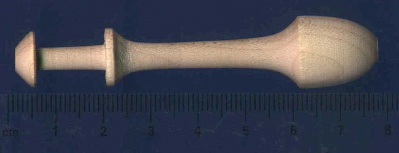
This too is Swedish, of the style used for Skåne Freehand lace.
Owner Sonja Sillay
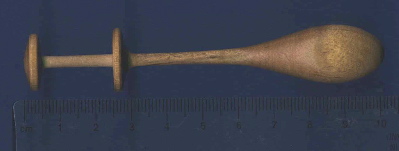
and this is a Swedish gimp bobbin.
Owner Sonja Sillay
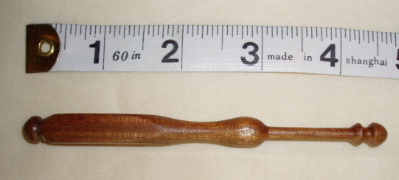
Because unspangled bobbins tend to roll around a flat pillow some lacemakers like to use bobbins with a squared shank.
This one comes from South Africa.

These are Maltese bobbins. Many Maltese bobbins have plainer shanks than these.

This Spanish style bobbin was bought in Menorca.
Owner Sonja Sillay
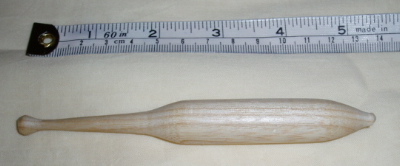
Another mass produced bobbin. This style is from the Czech Republic and is used for braid laces which require a relatively small number of bobbins, so the thicker shank is not a problem.

A modern Russian bobbin purchased at Lace Guild Convention, Scarborough 1994. This large bobbin is used for Russian braid laces which require a relatively small number of bobbins.